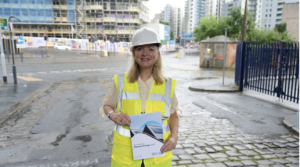Findings from Big Lottery’s national wellbeing evaluation
 The final results of the Big Lottery Fund’s national wellbeing programme are out and they are positive – we can improve people’s health and well being through targeted action.
The final results of the Big Lottery Fund’s national wellbeing programme are out and they are positive – we can improve people’s health and well being through targeted action.
The £160m national wellbeing programme began in 2008 and has run for five years. The programme supported projects across England which worked to help people to improve their wellbeing. A total of 17 organisations, including local health bodies and leading charities, were funded to deliver the projects, and the programme had three key objectives:
- Encourage healthy eating;
- Increase physical activity; and
- Promote good mental health
To capture the programme’s impact on participants’ wellbeing, the Big Lottery Fund commissioned CLES and the New Economics Foundation (Nef) to evaluate the programme. Over the past five years, we have conducted extensive research to gather a large amount of high quality data on how the programme has affected participants’ wellbeing. After analysis, the final report has just been published.
The report finds that the programme led to improvements across all areas of participants’ wellbeing and that improvements were sustained even after participants left the programme. The work demonstrates how simple projects which provide supportive environments and fun activities can have an important and lasting impact on a person’s wellbeing. Those who had the lowest levels of wellbeing to start with showed the greatest improvements. Indeed, reaching out to these people, while sometimes difficult, was important to a project’s success.
Most importantly, there is a virtuous upward spiral of health and wellbeing. Increasing the opportunities for socialising with others and having fun developed a person’s self-confidence and self-esteem. This in turn enabled them to make positive changes to other areas of their life, such as diet and exercise. Furthermore, as participants noticed their health and happiness increasing, they felt motivated to keep up their new healthy habits –the positive spiral is self reinforcing.
Here are the headline findings:
- Participants’ average life satisfaction rose significantly.
- Engagement in the programme increased participants’ life satisfaction three times more than would be expected if the person had doubled their income.
- The proportion of people reporting depressive symptoms fell by over a third (35%) after taking part in a well-being project.
- The proportion of participants likely to eat five portions of fruit and vegetables a day increased by 16%
- Those reporting low levels of physical activity fell by 21%.
- Participants’ self-esteem improved, with an increase of almost 25% more people feeling good about themselves and optimistic about the future after taking part in a project.
- The proportion of participants who reported feeling relaxed increased by 14% and projects which gave participants a routine and a purpose helped them feel happier and better about themselves.
The figure below shows positive increases in all the key indicators of participants’ well-being between entering and leaving the wellbeing programme.
The report is useful for commissioners and project managers because it identifies the characteristics of the most successful projects and why and how they work. Those involved in community development, clinical or public health, or supporting people into work or volunteering will find the evaluation’s results valuable for their work and the report includes specific recommendations to service providers, commissioners and government.
The report provides a list of the key characteristics which led to projects’ being successful and these include giving participants new skills, actively involving participants in delivering the project, embedding the project in a community, involving the whole family, and having regular activities in small groups over a longer period of time. Volunteering is also central. Projects which involved volunteers had a greater impact on a range of well-being outcomes. Volunteers themselves experienced huge improvements in their own wellbeing, gaining a greater sense of purpose and self-worth, and volunteers gave peer support and motivated other participants.
The programme has shown that initiatives which involve partners and which work on multiple areas of wellbeing are often the most successful. The upward spiral of success is not down to focussing on a particular area of wellbeing, but involving a range of agencies working together.
The findings support the government’s current work to move health and social care closer to communities and encourage local groups to take greater action to meet needs in their community. Overall, the evaluation tells us that we must continue to invest and accelerate wellbeing initiatives.
- The Big Lottery Fund, CLES and Nef are presenting the findings from the National Well-being Programme evaluation to the Cabinet Office on Tuesday 3rd September. Further events and activities are planned to disseminate the evaluation’s findings to other policy makers, practitioners and commissioning bodies.
















